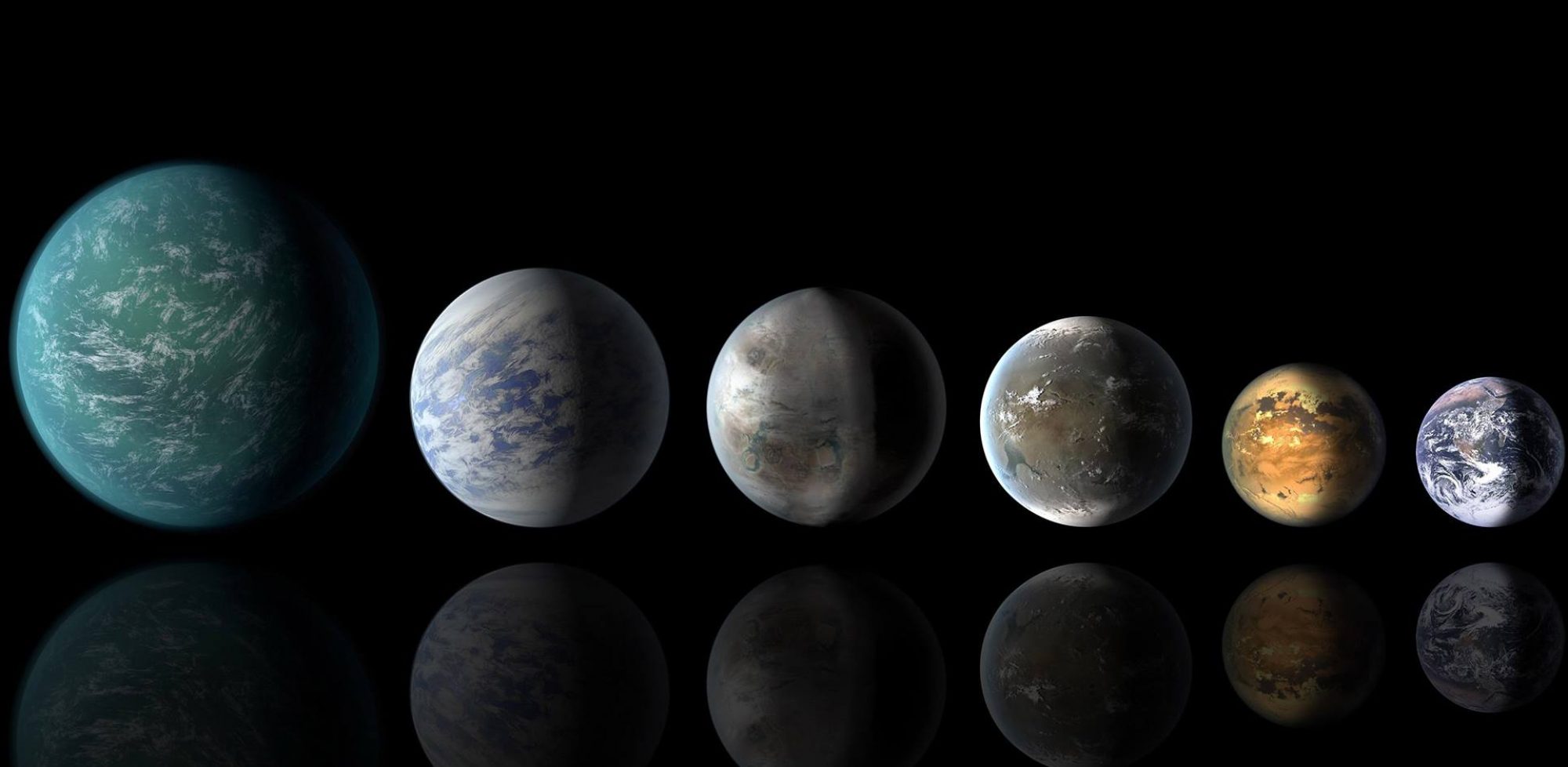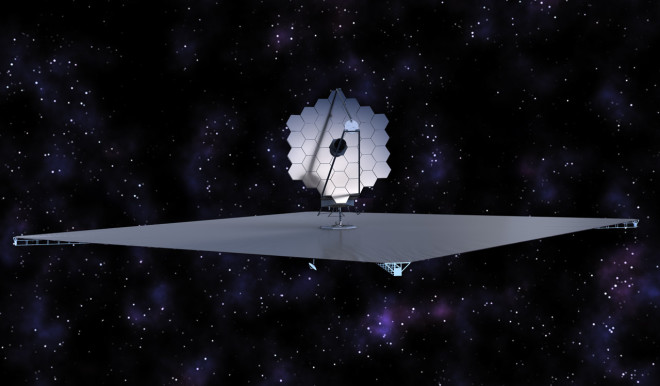
Assuming for a moment that life exists on some exoplanets, how might researchers detect it?
This is hardly a new question. More than ten years ago, competing teams of exo-scientists and engineers came up with proposals for a NASA flagship space observatory capable of identifying possible biosignatures on distant planets. No consensus was reached, however, and no mission was developed.
But early this year, NASA Astrophysics Division Director Paul Hertz announced the formation of four formal Science and Technology Definition Teams to analyze proposals for a grand space observatory for the 2030s. Two of them in particular would make possible the kind of super-high resolution viewing needed to understand the essential characteristics of exoplanets. As now conceived, that would include a capability to detect molecules in distant atmospheres that are associated with living things.
These two exo-friendly missions are the Large Ultraviolet/Optical/Infrared (LUVOIR) Surveyor and the Habitable Exoplanet (HabEx) Imaging Mission. Both would be on the scale of, and in the tradition of, scientifically and technically ground-breaking space observatories such as the Hubble and the James Webb Space Telescope, scheduled to launch in 2018. These flagship missions provide once in a decade opportunities to move space science dramatically forward, and not-surprisingly at a generally steep cost.

Because the stakes are so high, planning and development takes place over decades — twenty years is the typical time elapsed between the conception of a grand flagship mission and its launch. So while what is happening now with the science and technology definition teams is only a beginning — albeit one with quite a heritage already — it’s an essential, significant and broadly-supported start. Over the next three years, the teams will undertake deep dives into the possibilities and pitfalls of LUVOIR and HabEx, as well as the two other proposals. There’s a decent chance that a version of one of the four will become a reality.
Aki Roberge, an astrophysicist at the Goddard Space Flight Center and staff scientist of the LUVOIR study, said that the explicit charge to the teams is to cooperate rather than compete. Any of the four observatories under consideration, she said, would enable transformative science. But from an exoplanet perspective, the possibilities she described are pretty remarkable.
“What we’re aiming for is the capability to really search for the true Earth analogues out there, the Earth-sized planets in the habitable zones of sun-like stars. We need to understand their atmospheres, their climates, their compositions. And ultimately, the goal is to search for life.”
The co-chair of the HabEx team, Bertrand Menneson of the Jet Propulsion Lab, said the goals are the same: A major jump forward in our ability to understand exoplanets and a serious effort to find life.

The field of exoplanet detection and research has exploded over the past two decades, with an essential boost from increasingly capable observatories on Earth and in space. With at least three more major exoplanet-friendly space telescopes scheduled (or planned) for the next decade — as well as first light at several enormous ground-based mirrors — the brisk pace of discoveries is sure to continue.
So why are so many scientists in the field convinced that a grand, Flagship-class NASA space observatory is essential, and that it needs to be developed and built ground-up with exoplanet research in mind? Can’t the instruments in use today, and planned for the next decade, provide the kind of observing power needed to continue making breakthroughs?
Well, no, they can’t and won’t. That has been the conclusion of numerous studies over the years, and most recently an in-depth effort by the Association of Universities for Research in Astronomy (AURA,) http://www.hdstvision.org/report which last summer called for development of a 12-meter (about 44 feet across) High Definition Space Telescope with the super high resolution needed to study exoplanets. Generally speaking, a larger light-collecting mirror allows astronomers and astrophysicists to see further and better.
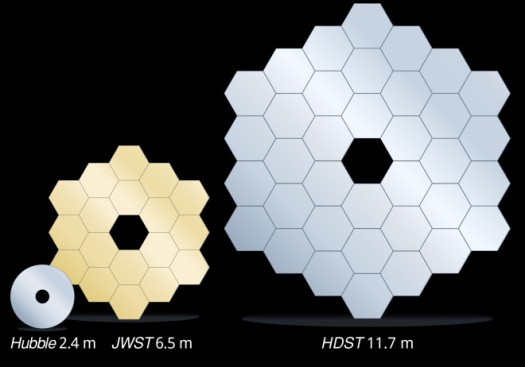
The group, headed by Julianne Dalcanton of the University of Washington and Sara Seager of MIT, began with this overview of the state of play when it comes to exoplanets, instruments, and what is possible now and might be in the future:
While we now have a small sample of potentially habitable planets around other stars, our current telescopes lack the power to confirm that these alien worlds are truly able to nurture life. This small crop of worlds may have temperate, hospitable surface conditions, like Earth. But they could instead be so aridly cold that all water is frozen, like on Mars, or so hot that all potential life would be suffocated under a massive blanket of clouds, like on Venus. Our current instruments cannot tell the difference for the few rocky planets known today, nor in general, for the larger samples to be collected in the future. Without better tools, we simply cannot see their atmospheres and surfaces, so our knowledge is limited to only the most basic information about the planet’s mass and/ or size, and an estimate of the energy reaching the top of the planet’s atmosphere. But if we could directly observe exoplanet atmospheres, we could search for habitability indicators (such as water vapor from oceans) or for signs of an atmosphere that has been altered by the presence of life (by searching for oxygen, methane, and/or ozone).
A central goal for both LUVOIR and HabEx is to provide that “seeing” through much more sophisticated direct imaging — that is, capturing the actual reflected light from exoplanets rather than relying on indirect techniques and measurements. The many indirect methods of finding and studying exoplanets have played and will continue to play an essential role. But there is now a community consensus that next generation direct imaging from space is the gold standard.
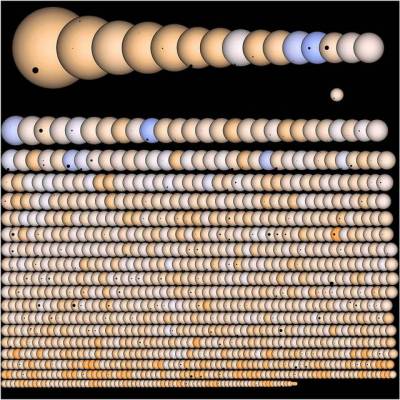
That a major space observatory for the 2030s just might be exoplanet-focused reflects a definite maturing of the field. From a science perspective, the discoveries of the Kepler mission in particular made clear that exoplanets are everywhere, and not infrequently orbiting in habitable zones. The work of the Curiosity rover on Mars, and especially the conclusion that the planet once was wet and “habitable,” added to the general interest and excitement about possible life beyond Earth.
And then there are the lessons learned from the earlier bruising battles among exoplanet scientists, who had developed a reputation for serious in-fighting. THEIA, the Telescope for Habitable Exoplanets and Interstellar/Intergalactic Astronomy, was put forward as a flagship direct imaging mission in 2010, when the Astronomy and Astrophysics Decadal Survey that sets priorities for the field was being put together by the National Academy of Sciences. But THEIA was not adopted.
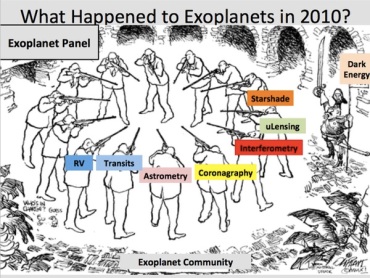
With the 2020 Decadal Survey on the horizon, exoplanet scientists have tried to limit conflicts and to work with the larger astronomy community. The formal NASA/community study group, the Exoplanet Exploration Program Analysis Group (ExoPAG), brought two related groups together and ultimately recommended the intensified study for LUVOIR, HabEx and the two other proposals — which focus on black holes, ancient galaxy formation, and other aspects of the early cosmos. https://exep.jpl.nasa.gov/files/exep/ExoPAG_Large_Missions.pdf
When completed, the studies will go to the National Academy of Sciences for further review, discussion, and ultimately a recommendation to NASA regarding which project should go forward.
The leader of the ExoPAG group was astronomer Scott Gaudi of Ohio State University, who specializes in characterizing exoplanets but played no favorites in the ExoPAG report and recommendations.
“What we want is to set up a fair process of intense review so the most compelling science can be chosen to go forward. At this point, we don’t know if the necessary technologies will be available in time, and we don’t know what the costs will be. There’s only so much money that comes from NASA for our (astrophysics) community, and maybe a top choice will cost more than the community is willing to spend. So there are so many factors to consider.”
(The LUVOIR mission is generally considered to be somewhat more ambitious than HabEx, and would require a larger telescope mirror — greater than 8 meters across –and more funding. Flagship missions are expensive, as NASA learned once again with the James Webb telescope, which will have cost $8.8 billion by the time of its scheduled launch.)
I asked Gaudi if the seemingly substantial public interest in exoplanets could play any role in subsequent decision-making, and he replied that it possibly would. “In the past five or ten years, exoplanets have become a prominent topic for sure. And the public is clearly very, very interested in that topic.” But that public interest, he said, won’t mean much if the science and technical feasibility isn’t there.

We won’t know for some years if the stars will align in a way that will lead to a major observatory with direct imaging and exoplanets at its center. But for those active in the field, the opportunity to take part in a major effort to formally determine its scientific merit and feasibility is irresistible.
Shawn Domagal-Goldman, a research space scientist at Goddard, was selected to be a deputy on the LUVOIR science and technology team, which he sees as a much-anticipated “proof of concept” effort for the exoplanet research of the future.
Between 12 and 18 scientists and engineers will be selected by NASA headquarters for each team, and Domagal-Goldman said it’s essential that they make up a broad and inter-disciplinary group, including people from industry. Scientists from abroad not associated with an American institution can’t be formal members, but they can observe and may become more involved if their national space agencies decide to join in the effort. He encourages researchers — from newly minted PhDs to career scientists — to nominate themselves to join.
“Nobody gets paid for this, it’s a labor of love,” he said. “But what would be more satisfying than having some of your intellectual contribution go into the formulation of missions like these.
“Direct imaging of exoplanets is clearly a direction where the community is headed. These are the missions of the future in one form or another, and if you’re a PhD or postdoc who’s qualified, this could be your career.”
Of course, it just might make the greatest discovery of modern science — finding life beyond Earth.
